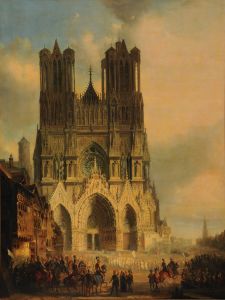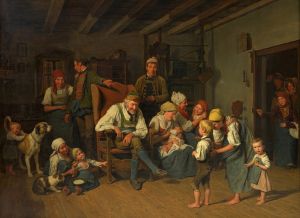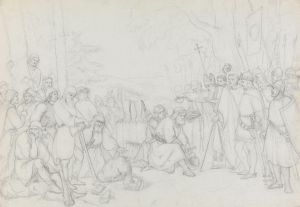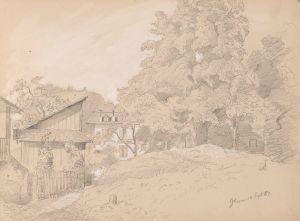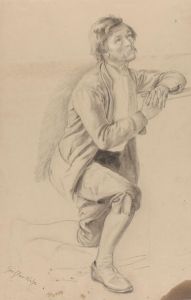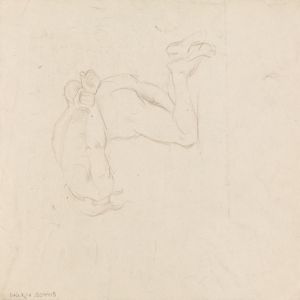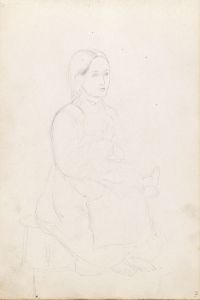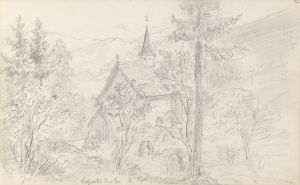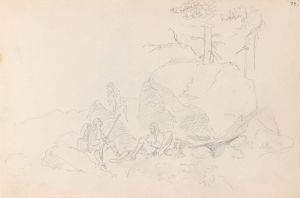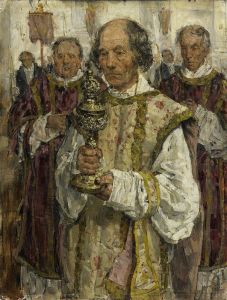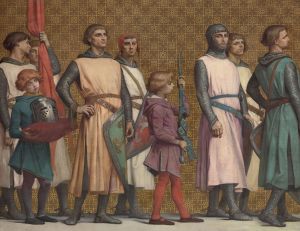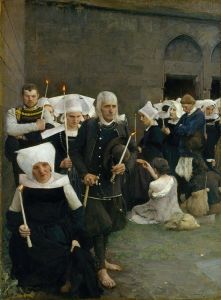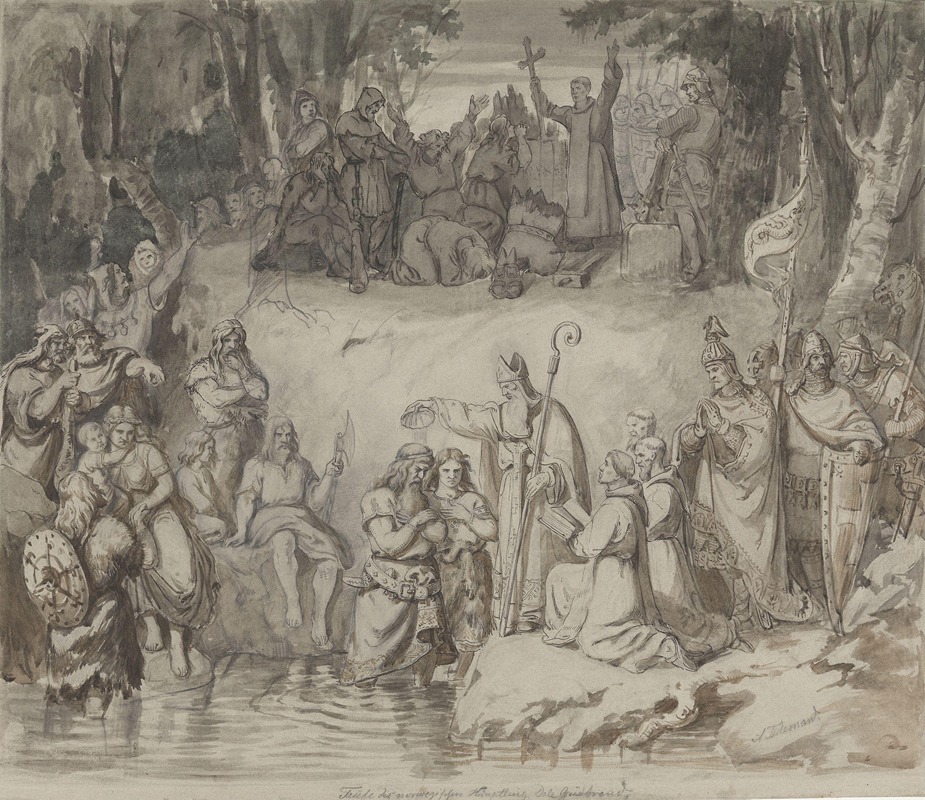
Dale Gudbrands dåp
A hand-painted replica of Adolph Tidemand’s masterpiece Dale Gudbrands dåp, meticulously crafted by professional artists to capture the true essence of the original. Each piece is created with museum-quality canvas and rare mineral pigments, carefully painted by experienced artists with delicate brushstrokes and rich, layered colors to perfectly recreate the texture of the original artwork. Unlike machine-printed reproductions, this hand-painted version brings the painting to life, infused with the artist’s emotions and skill in every stroke. Whether for personal collection or home decoration, it instantly elevates the artistic atmosphere of any space.
Adolph Tidemand's painting Dale Gudbrands dåp (translated as The Baptism of Dale-Gudbrand) is a significant work of Norwegian art that reflects the historical and cultural transition of Norway during the Christianization period. Created in 1853, the painting is one of Tidemand's most recognized works and is celebrated for its detailed depiction of a pivotal moment in Norwegian history.
The artwork portrays the legendary baptism of Dale-Gudbrand, a chieftain from the Gudbrandsdalen valley, as described in the medieval saga Heimskringla by Snorri Sturluson. According to the saga, the event took place during the 11th century when King Olaf II of Norway (later Saint Olaf) traveled through the region to convert the population to Christianity. Dale-Gudbrand initially resisted the new faith, but after witnessing what was interpreted as a divine sign—the destruction of a pagan idol—he agreed to be baptized along with his followers.
Tidemand's painting captures this dramatic moment of conversion. The central figure, Dale-Gudbrand, is depicted kneeling in submission as he receives baptism from a Christian priest. Surrounding him are his followers, some of whom appear hesitant or contemplative, reflecting the tension and uncertainty of the era. King Olaf is also present in the scene, portrayed as a commanding and authoritative figure, symbolizing the forceful yet transformative role he played in Norway's Christianization.
Adolph Tidemand was a leading figure in the Norwegian Romantic Nationalism movement, and his works often focused on themes of history, folklore, and rural life. Dale Gudbrands dåp exemplifies his ability to combine historical narrative with emotional depth and meticulous attention to detail. The painting not only serves as a visual representation of a key historical event but also reflects the 19th-century Norwegian interest in national identity and cultural heritage.
The painting is housed in the National Museum of Art, Architecture and Design in Oslo, Norway, where it continues to be an important piece of the country's artistic and historical legacy. Through its vivid storytelling and historical significance, Dale Gudbrands dåp remains a powerful reminder of the cultural shifts that shaped Norway's history.





